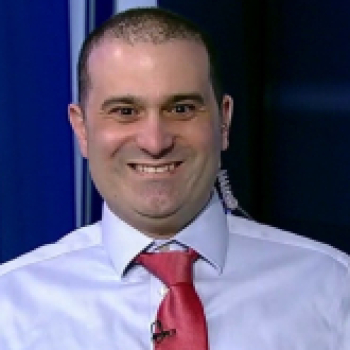Overview
The disruption to global financial and credit markets continued. Current and expected policy rates fell. Sterling depreciated substantially. In the United Kingdom, output growth moderated to around its long-term historical average rate. Consumer spending growth appeared to soften and the climate for investment deteriorated. International prospects worsened, especially in the United States. Under the assumption that Bank Rate falls in line with market yields, the Committee's central projection is for output growth to slow markedly this year and then gradually start to recover. The risks to growth are weighted to the downside.
CPI inflation was close to the 2% target in December. Pay growth was steady. But some measures of inflation expectations rose. In the central projection, higher energy, food and import prices push inflation up sharply in the near term. Inflation then drops back to a little above the 2% target in the medium term, as the temporary boost from higher energy prices disappears and capacity pressures moderate. The risks to inflation are balanced. The combination of slow growth and above-target inflation poses substantial challenges for policy.
Financial markets
Global financial markets have been febrile since the November Report, and are vulnerable to further shocks. Equity prices declined, reflecting the deterioration in the economic outlook. The market for securitised debt remained virtually closed. Although conditions in money markets improved somewhat, term interest rates remained well above expected policy rates, reflecting heightened concerns about creditworthiness.
Against that background, UK banks tightened the terms offered on new loans to households and businesses. And the potential deterioration in banks' capital ratios as off balance sheet loans are re-intermediated may further restrain new lending. But it is difficult to judge the eventual impact on demand, particularly since falling asset prices could interact with banks' capital requirements and borrowers' collateral limits to amplify the contraction in spending.
Market participants' expectations of the near-term path of policy rates fell. The MPC cut Bank Rate by 0.25 percentage points to 5.5% at its December meeting. Market participants expected Bank Rate to fall to around 4.5% during 2008.
The sterling effective exchange rate depreciated by 6%, the largest three-monthly fall since the exit from the ERM. Market concerns about the size of the UK current account deficit - the highest relative to GDP in the G7- may have been a factor.
Domestic demand
Consumers' expenditure rose strongly in the third quarter. But there are signs that household spending growth has since moderated, perhaps reflecting earlier increases in Bank Rate and heightened uncertainty about the outlook. Residential property prices stagnated and indicators of housing activity weakened further. Tighter credit conditions, the desire to rebuild savings and a squeeze on real income growth are likely to check spending growth.
Business investment rebounded in Q3. But investment intentions eased towards the year end. The weaker and more uncertain outlook for demand, reduced access to external finance and falling commercial property prices are all likely to weigh on capital spending over the coming year.
Government spending continued to make a moderate contribution to overall demand growth. According to the fiscal plans set out in October's Pre-Budget Report, the public sector's contribution to nominal demand growth is set to decline over the forecast period.
Overseas trade
International economic prospects have deteriorated since the November Report. In the United States, GDP growth fell sharply, the labour market weakened and the weakness in the housing market appeared to be spreading to other parts of the economy. As a result, the Federal Reserve reduced official interest rates substantially. In the euro area, business surveys pointed to some softening in output growth from its recent firm pace. In contrast, the emerging market economies of Asia continued to expand robustly.
Overall, the Committee expects a modest slowing in the growth of the main UK export markets, though by somewhat more than in November. That is offset by the depreciation of sterling, which can be expected to boost UK competitiveness. Consequently net trade is expected to add to GDP growth over the next few years, contrary to the experience over much of the past decade.
The outlook for GDP growth
GDP growth moderated to 0.6% in Q4 according to the ONS's preliminary estimate, with the slowdown concentrated in the financial and retail sectors. Business surveys and reports from the Bank's regional Agents point to a further modest deceleration in activity in early 2008.
Chart 1 shows the Committee's best collective judgement for four-quarter GDP growth, assuming that Bank Rate follows the declining path implied by market yields. The fan also extends into the past, reflecting the present uncertainty about the final estimates of GDP. In the central projection, output growth slows markedly through 2008 as tighter credit conditions and weaker real income growth bear down on domestic demand. Growth then starts to recover, as credit conditions improve and the effects of lower interest rates and weaker sterling work through. The projected slowdown is somewhat deeper and more prolonged than in the November Report.
Costs and prices
CPI inflation remained close to target in December, at 2.1%. Higher prices for energy, food and imports are set to push up inflation again in the near term. The extent to which consumer prices increase will depend on whether businesses and retailers can pass on higher input costs. Suppliers of domestic energy have already announced large retail tariff increases. And survey measures of businesses' pricing intentions remain elevated, suggesting that many businesses intend to pass on cost increases. But there are indications that retailers have been accepting lower profit margins in order to maintain sales volumes. Were this to continue, it would attenuate the pass-through into prices paid by consumers.
Private sector pay growth was relatively muted last year. There are few pay settlements for 2008 available so far, but according to a survey of contacts of the Bank's regional Agents, companies expect awards to be similar to those in 2007. Measures of labour market tightness based on official data have changed little over the past few months, although survey measures point to some easing.
A central question is whether the episode of above-target CPI inflation during 2006 - 07 and the prospective repeat this year will prompt a sustained rise in inflation expectations, with a risk of heightened inflationary pressures in the medium term. Survey measures of household inflation expectations have risen over the past year or so. Measures derived from financial market instruments also rose, though that may reflect factors specific to the index-linked gilts market.
The outlook for inflation
Chart 2 shows the Committee's best collective judgement of the outlook for CPI inflation, assuming that Bank Rate falls in line with market yields. In the central projection, higher energy, food and import prices push inflation up sharply in the near term. Inflation then eases back to a little above the 2% target in the medium term, as the near-term rise in energy prices drops out of the twelve-month rate and capacity pressures moderate. The profile is higher than in the November Report, particularly in the near term. A similar projection, which assumes that interest rates remain constant at 5.25% (Chart 3), shows the central projection for inflation settling below the target in the medium term.

As usual, there are substantial uncertainties surrounding these projections. The key risks are: on the downside, the potential for a greater tightening in credit conditions, and the associated impact on demand, at home and abroad; and, on the upside, the possibility that the short-term rise in inflation leads to a more persistent rise in medium-term inflation expectations. Overall, the risks around the central projection to growth lie to the downside, while those to inflation are balanced. But there is a range of views among the Committee on both the central projection and the balance of risks.
The policy decision
At its February meeting, the Committee noted that the immediate prospect was for a combination of above-target inflation and sluggish output growth. The Committee also noted that slower demand growth, by reducing the pressure on capacity, was likely to be necessary to return inflation to the target in the medium term. Under market interest rates, the central projection for inflation was a little above the target in the medium term, while under constant interest rates, it was below the target. There were particular uncertainties relating to the severity of the tightening in credit conditions and the future path of inflation expectations. The key challenge for policy was to balance these conflicting risks. The Committee judged that a reduction of 0.25 percentage points in Bank Rate to 5.25% at its February meeting was necessary to meet the target for CPI inflation over the medium term.










Add a Comment
We encourage you to use comments to engage with other users, share your perspective and ask questions of authors and each other. However, in order to maintain the high level of discourse we’ve all come to value and expect, please keep the following criteria in mind:
Enrich the conversation, don’t trash it.
Stay focused and on track. Only post material that’s relevant to the topic being discussed.
Be respectful. Even negative opinions can be framed positively and diplomatically. Avoid profanity, slander or personal attacks directed at an author or another user. Racism, sexism and other forms of discrimination will not be tolerated.
Perpetrators of spam or abuse will be deleted from the site and prohibited from future registration at Investing.com’s discretion.